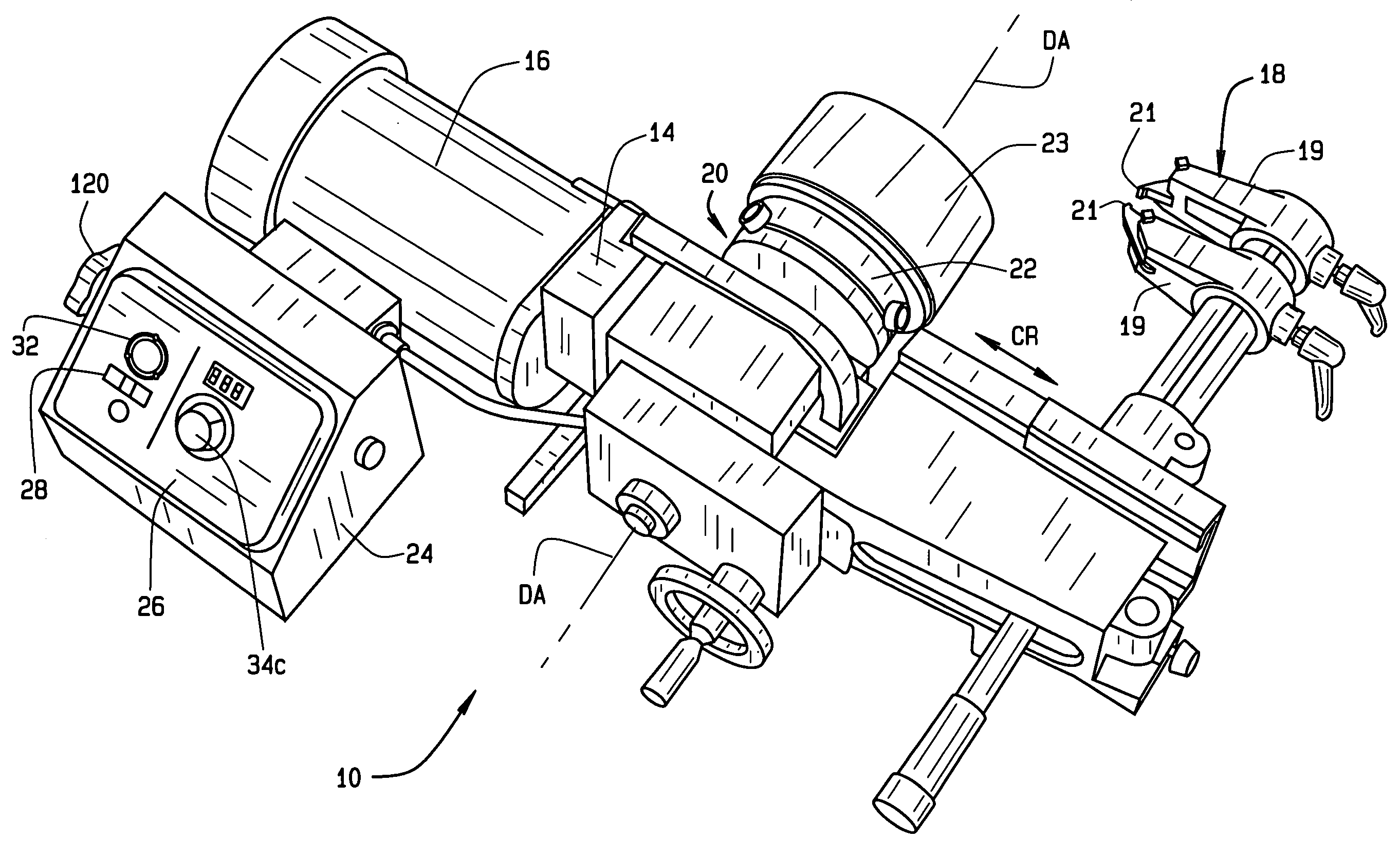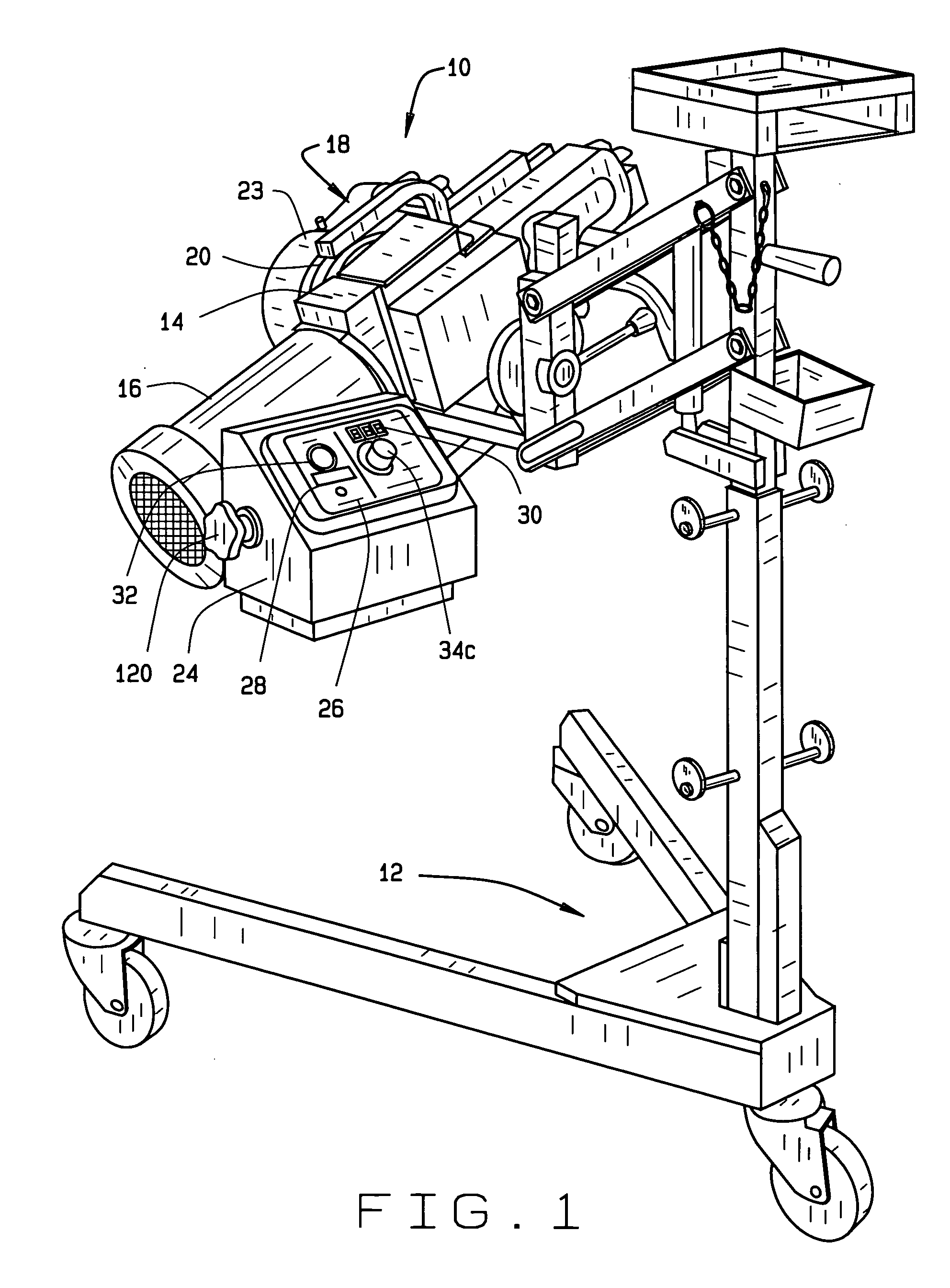Method and apparatus for resurfacing brake rotors
a brake rotor and surface coating technology, which is applied in the field of automotive vehicle brake lathes, can solve the problems of lateral warping formation of grooves, channels or scratches on the surface of the brake rotor, and repeated and substantial frictional forces on the rotor
- Summary
- Abstract
- Description
- Claims
- Application Information
AI Technical Summary
Benefits of technology
Problems solved by technology
Method used
Image
Examples
Embodiment Construction
[0054] The following detailed description illustrates the invention by way of example and not by way of limitation. The description clearly enables one skilled in the art to make and use the invention, describes several embodiments, adaptations, variations, alternatives, and uses of the invention, including what is presently believed to be the best mode of carrying out the invention.
[0055] Referring to FIGS. 1 and 2, an on-car brake lathe 10 of the present invention is shown mounted to a transport trolley 12 for positioning adjacent a vehicle to be worked on (not shown). The on-car brake lathe 10 includes a support structure 14, onto which is mounted a variable speed drive spindle motor 16, a an adjustable cutting head 18, and an output spindle 20. The variable speed spindle motor 16 is coupled to the output spindle 20 through a conventional drive mechanism (not shown) contained within the support structure 14, to rotate the output spindle 20 about a drive axis DA, and to linearly ...
PUM
| Property | Measurement | Unit |
|---|---|---|
| thickness | aaaaa | aaaaa |
| movement | aaaaa | aaaaa |
| electrically conductive | aaaaa | aaaaa |
Abstract
Description
Claims
Application Information
 Login to View More
Login to View More - R&D
- Intellectual Property
- Life Sciences
- Materials
- Tech Scout
- Unparalleled Data Quality
- Higher Quality Content
- 60% Fewer Hallucinations
Browse by: Latest US Patents, China's latest patents, Technical Efficacy Thesaurus, Application Domain, Technology Topic, Popular Technical Reports.
© 2025 PatSnap. All rights reserved.Legal|Privacy policy|Modern Slavery Act Transparency Statement|Sitemap|About US| Contact US: help@patsnap.com



